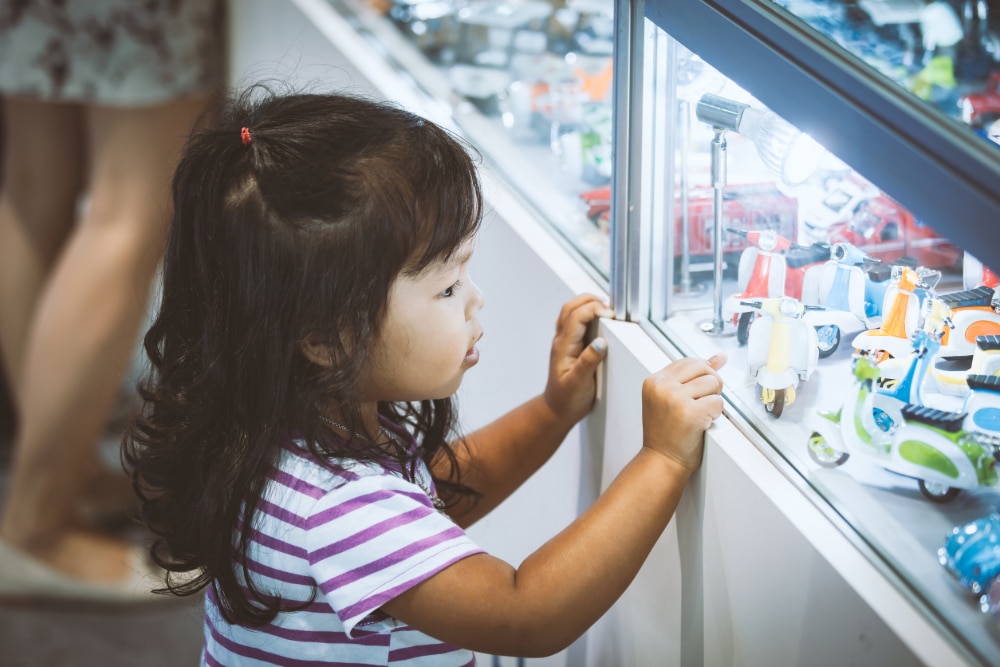Are Blind Boxes Turning Kids Into Addicts?

A new youth trend is sweeping across China, and the Chinese government is warning that it can be hazardous to children’s health. The fad is called “blind boxing.” Kids purchase boxes not knowing exactly what toys or treats will be inside them.
According to a research paper published in Frontiers in Behavioral Neuroscience in 2022, blind boxing has been booming in China. Starting from less than a $1 billion market in 2015, blind boxes grew to over $4 billion in 2020. Annual expenditures for blind boxes in China are expected to exceed $20 billion in 2025, a twentyfold increase in 10 years.
The theory is that uncertainty increases the value of the reward, so that customers have an anticipation high when contemplating the purchase of a blind box, a dopamine surge upon purchasing the blind box, and then again upon opening the box. The model outlined in the research paper shows how “perceived uncertainty” impacts “impulsive purchase intention.”
The researchers are from an unusual place for the study of neuroscience: the School of Economics and Management at Shanghai Institute of Technology in China. Their interest in the impact of blind boxes on purchasing decisions comes from a marketing perspective, rather than a public health perspective. The authors summarize their findings:
The results show that perceived uncertainty has a positive impact on consumers’ impulsive purchase intentions, in which curiosity plays a mediating role. Besides, perceived luck positively moderates the impact of perceived uncertainty on impulsive purchase intention.
The authors cite previous research that consumers find the uncertainty of reward stimulating. For “emotional purchases” or impulse purchases, reward uncertainty is particularly satisfying. They cite studies that show reward uncertainty is “associated with hedonic ability and the decision to take risks,” and that “high uncertainty can activate the brain’s reward system and enhance an individual’s learning ability and behavioral motivation.”
The authors — again, from the world of marketing — explain how an information gap is stimulating to consumers, especially when they close the gap. All information is received sequentially. When sounds or letters add up to words, there is a feeling of successfully completing a puzzle. Thus, guessing what is in a blind box, then opening the box, leads to the satisfaction of curiosity.
The researchers also explore the impact of blind boxes on a person’s attitude. They find that people are generally optimistic, meaning they exaggerate the likelihood of positive outcomes. Blind boxes not only play on that optimism, they become reinforcing as people tend to value the item more due to the element of surprise. They feel they got lucky, which induces them to spend more money, more often.
Now let’s look at how this theory of blind boxing is working out in practice.
Pop Mart International, “the world’s most valuable toymaker,” has built an empire on blind boxes and blind decks. The South China Morning Post explains how it works:
The mainstay of Pop Mart’s business model is its blind boxes and blind cards, which hide their contents with sealed packaging. That drives collectors into frequent and repeat purchases to get their hands on the rarest and most desired toys or cards, where the chance of finding rare editions has been calculated at less than 2 per cent.
China’s People’s Daily, an organ of the Chinese Communist Party, slammed the use of blind decks and blind boxes in an editorial, saying they are leading children to become addicts. Pop Mart’s stock dropped 8% on the news, but it is still growing at a brisk annual rate with a market capitalization of $41 billion (more than Hasbro and Mattel combined). In 2023, China banned the sale of blind boxes to children under the age of eight.
The People’s Daily noted that blind boxes and blind decks induce gambling and become “addictive.” The addiction drives “irrational consumption,” with families spending large sums to find rare, collectible dolls and toys. The government is considering an elaborate identification system to prevent minors from purchasing blind boxes or blind decks without the consent of a guardian.
None of the researchers mentions the similarity between blind boxes and loot boxes, which we have covered here at AddictionNews. Loot boxes in video games are blind reward boxes that contain anything from trivial gifts to points that can be exchanged for real-world goods. Game makers have found that loot boxes increase engagement and playing time. Researchers have found that they lead to gambling addiction and other problem behaviors.
It’s not surprising that blind boxes and blind decks have taken off with a generation of kids raised with digital games — even educational games — that use reward boxes to increase engagement and encourage completion of lessons. The shift to seeing reward boxes and reward decks in stores seems natural to children.
As they become adolescents, they’ll be used to the feelings of thrill-seeking and risk-taking that often lead to substance abuse, eating disorders, gambling and gaming disorders, and behavioral disorders. Recently, U.S. courts have indicated that they’re fine with software companies intentionally designing products that are harmful to children’s mental health. Don’t be surprised, then, when surprise boxes start appearing in every checkout line in America — right next to the lottery tickets.
Written by Steve O’Keefe. First published June 30, 2025.
Sources:
“Research on the effect of uncertain rewards on impulsive purchase intention of blind box products,” Frontiers in Behavioral Neuroscience, August 14, 2022.
“China warns of blind box ‘addiction’ among country’s youth,” South China Morning Post, June 20, 2025.
“Pop Mart’s shares get a beating as People’s Daily weighs in to rail against ‘blind boxes’,” South China Morning Post, June 20, 2025.
Image Copyright: adkasai.




